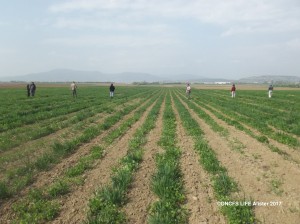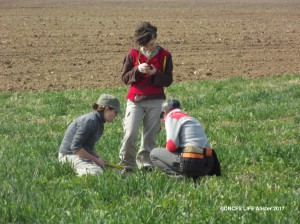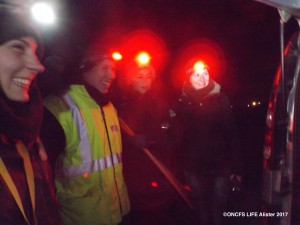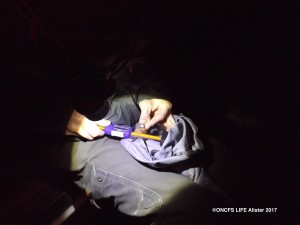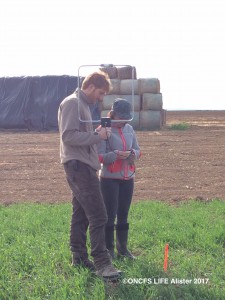To be monitored, European Hamsters must first be captured
28 juillet 2017Like every year, monitoring European Hamsters begins when they leave their hibernation period. The ONCFS team, with the assistance of 5 motivated technicians, begins by looking for burrows on the LIFE Alister experimental plots. It then notes traces of activity: droppings, consumption of plants, traces of passage, etc. and localises them. Then captures are organised near these burrows in order to mark and follow adult European Hamsters using a telemetry system.
Picture 1: prospecting
Picture 2: research of presence at a burrow
Between 10 April and 12 May 2017, 63 animals were captured, weighed, measured and all of this data was recorded. Sixteen of the hamsters had already been captured the previous year.
Picture 1: captures at night
Picture 2: measuring the tibia of an animal in a sock
The ONCFS team is currently monitoring a sample of 36 animals equipped with radio transmitters that identify them and locate them remotely using a receptor and antenna. To monitor an animal, all that has to be done is to adjust your receptor to the right frequency, just like when you are listening to the radio, and you can hear its “beep.” The frequency of beeps tells the team whether the animal is dead or alive.
This monitoring system assesses the impact of agricultural actions carried out on the experimental plots on the survival of European Hamsters.
Telemetry session (first use of the device during a training session for the technicians)

